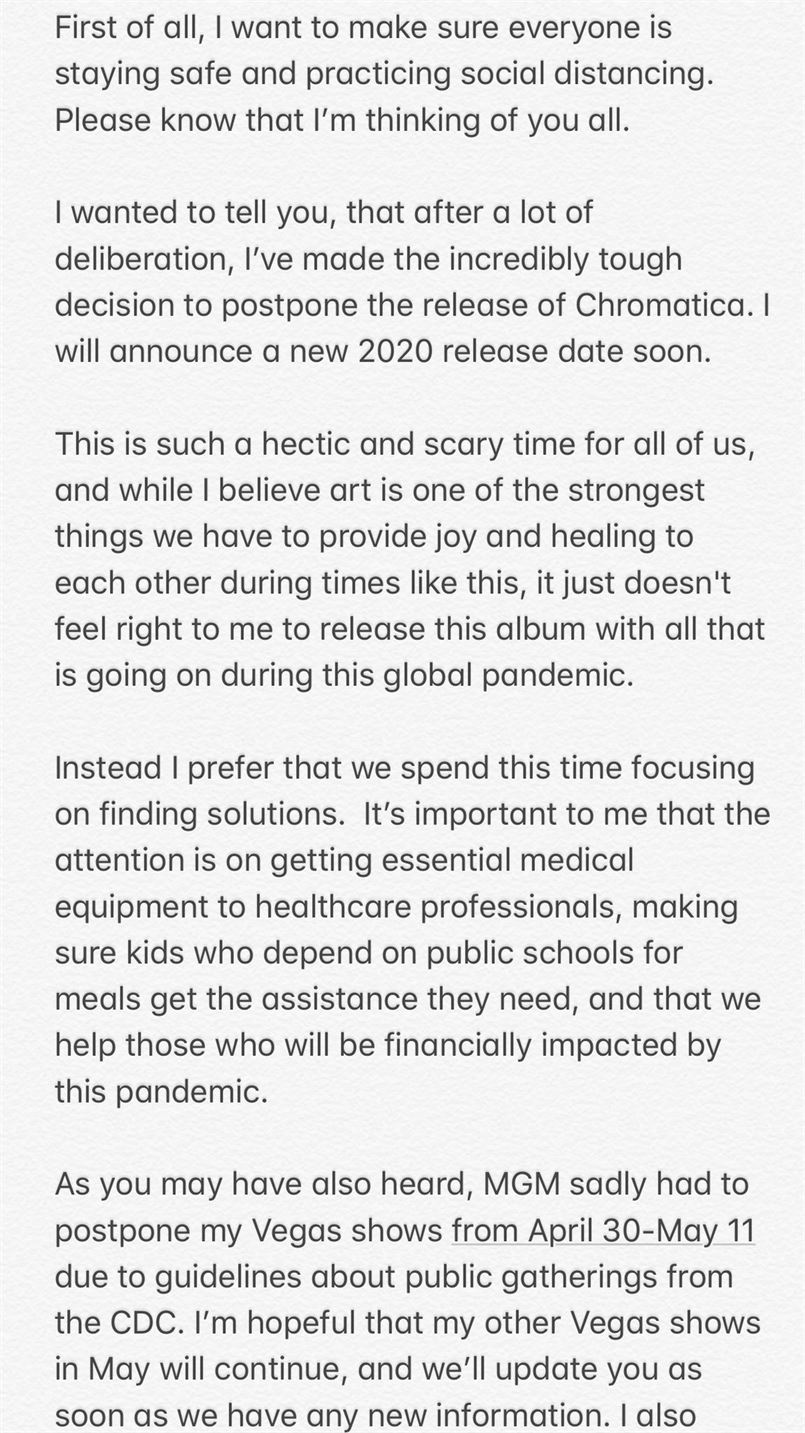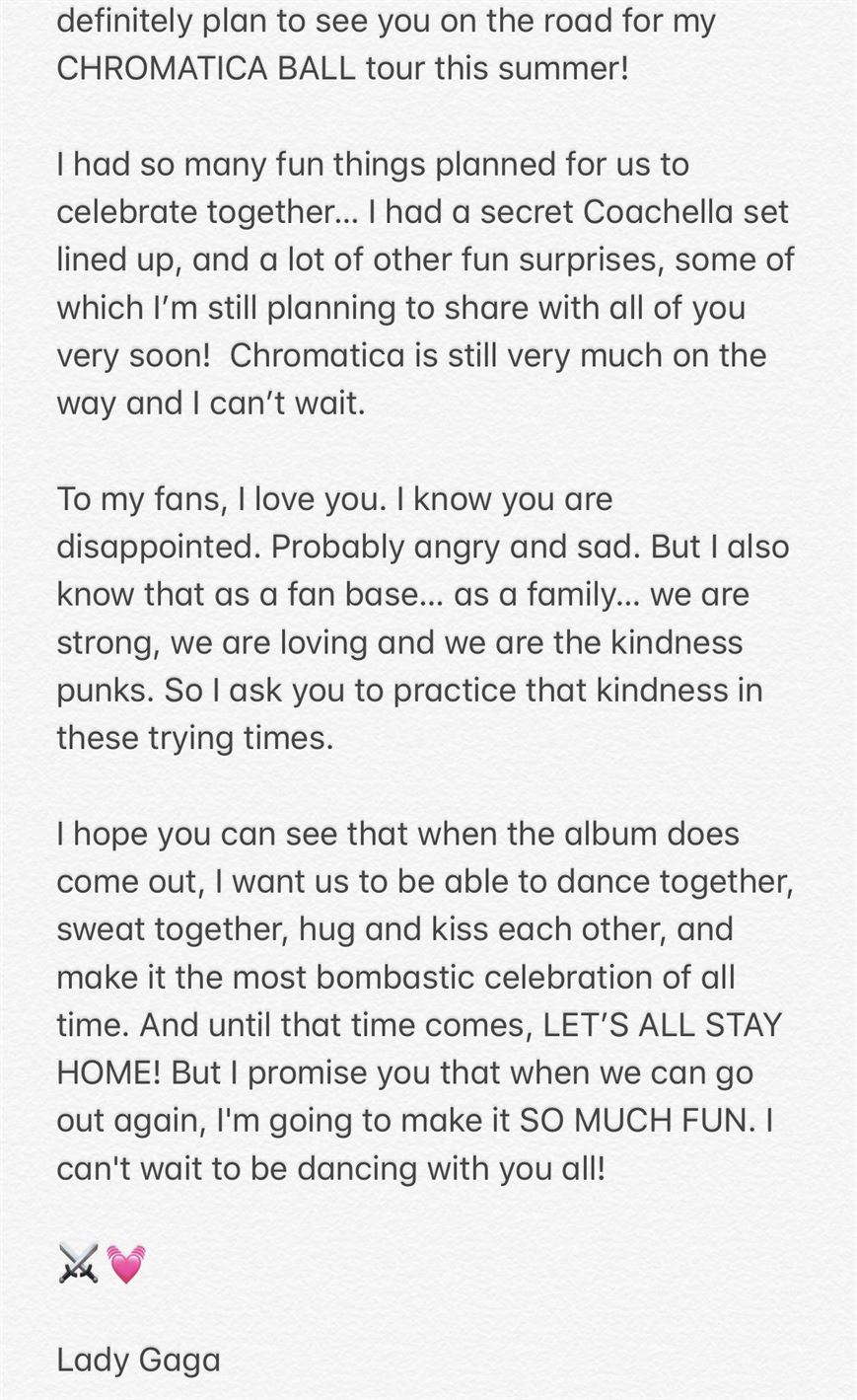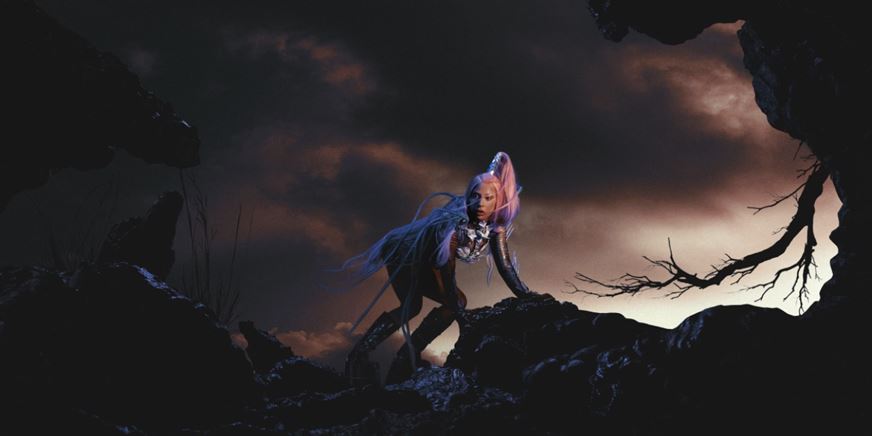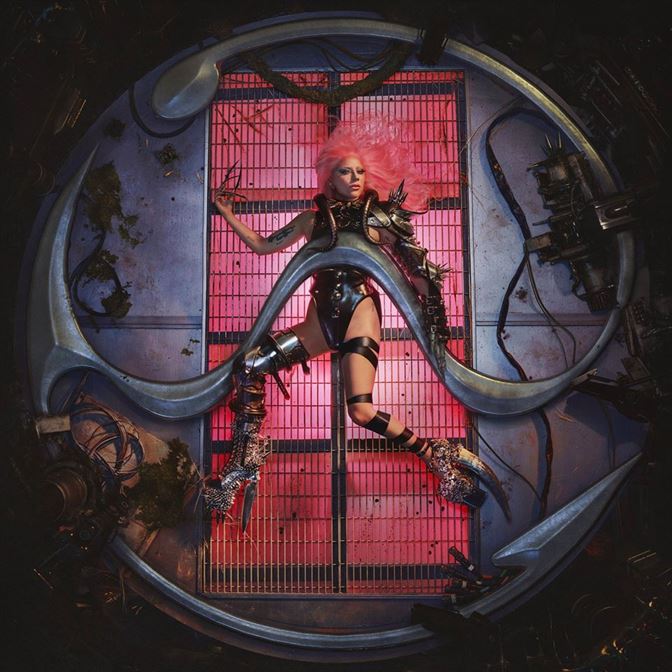Lady Gaga has returned from the limelight of Hollywood to the music scene, with the release of her sixth studio album, “Chromatica,” on May 29.
In late March, Lady Gaga announced the postponement of her album due to COVID-19, originally set to release on April 10. The announcement was made from her social media page with a statement that encouraged her fans to be kind during what was the beginning of several long months of quarantine.
“I can’t wait to be dancing with you all,” Lady Gaga said.

Lady Gaga announces the postponement of “Chromatica” on social media.
Photo courtesy of Lady Gaga’s Twitter (@ladygaga)

Lady Gaga announces the postponement of “Chromatica” on social media.
Photo courtesy of Lady Gaga’s Twitter (@ladygaga)
Lady Gaga promised that she and her fans would be dancing soon again and she delivered. “Chromatica” is packed with pop-dance tracks that are sure to make you go “gaga.” The album also includes musical features from the likes of Ariana Grande, BLACKPINK and Elton John.
The journey through “Chromatica” is guided through three interludes of orchestral instrumentals. Beginning with the first track of the album, Lady Gaga masterfully sets the stage in “Chromatica I.” The track gives a glimpse into Lady Gaga’s latest universe, where the anticipation seems like uncharted territory. However, there’s a tenderness to the track that makes it familiar.
While Lady Gaga begins the album with a beautiful array of classical instruments, the transitioning to the 21st century computer generated pop sounds we’ve come to love may seem paradoxical, but in true Lady Gaga fashion, it only makes sense.
“Alice,” the track that follows “Chromatica I,” lyrically sets the tone for Lady Gaga’s feelings in the album. She sings, “My name isn’t Alice / But I’ll keep looking, I’ll keep looking for Wonderland.” Lady Gaga asks to be taken to wonderland, which can be interpreted to be synonymous to her home. Whatever the case may be, she has yet to find a place she can call home and judging by the lyrics in the song, she intends to keep looking for one.
The music video for the song “Stupid Love” was released ahead of the album and begins with a written statement that provides some context for “Chromatica.”
“The world rots in conflict,” the statement said. “Many tribes battle for dominance. While the spiritual ones pray and sleep for peace, the Kindness punks fight for Chromatica.”
While it doesn’t explicitly say, the statement serves as a metaphor for our current social climate.
So much can be drawn from “Chromatica” as color and music are both at play with regard to the word “chromatic.” Chroma, in fact, refers to a color’s intensity. In the two music videos made available from “Chromatica,” Lady Gaga and her dancers are split up into monochromatic groups with Gaga, bright as ever, wearing pink.
The pop star showcases the breadth of her vocal talent and instrumental usage in this album which employs the musical reference of the chromatic scale, which is a twelve-tone musical scale that exists outside of the seven-note diatonic scale.
Lady Gaga honors the power of music and sound with her collaboration with Elton John, “Sine From Above,” where sine waves contribute to the creation of sound, the impetus for her being and artistic endeavors.

“Chromatica” features collaborations with stars such as Ariana Grande, BLACKPINK and Elton John.
Photo courtesy of Interscope Records
Lady Gaga also addresses mental health on the album. She describes her relationship with her prescription antipsychotics in the playful track, “911.” Lady Gaga has long been an advocate for mental health and has been open about her own traumatic experiences, along with the post-traumatic stress disorder and chronic pain she suffers from.
Lady Gaga concludes “Chromatica” with “Babylon,” a song that would appropriately fit a runway strut but one’s neighborhood sidewalks will do just fine.
It is no secret that Lady Gaga has turned heads since she first came to stardom. As with many celebrities, she’s dealt with the common negativity and gossip. Luckily, this hasn’t been enough to deter the singer from her goals as she says, “Talk it out, Babble on / Battle for your life, Babylon / That’s gossip, what you on?”
“Chromatica” has proven itself to be worth the wait, debuting at No.1 on the United Kingdom charts during its release week.
“Chromatica” was released in the wake of the outpour of frustration and mourning of the brutal murder of George Floyd. While the album is certainly not a cure for the suffering of millions due to deep-rooted violence and oppression, it is an ounce of fuel to the kindness punks she calls upon to demand for a better world.



